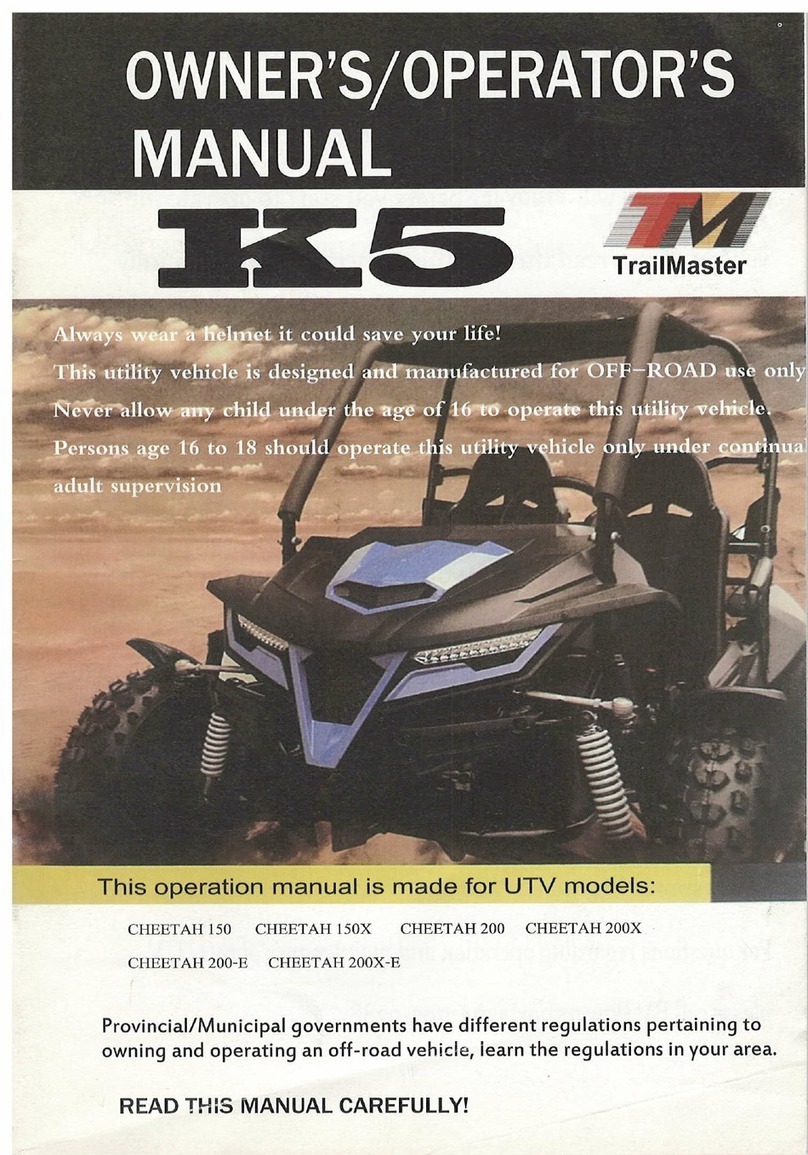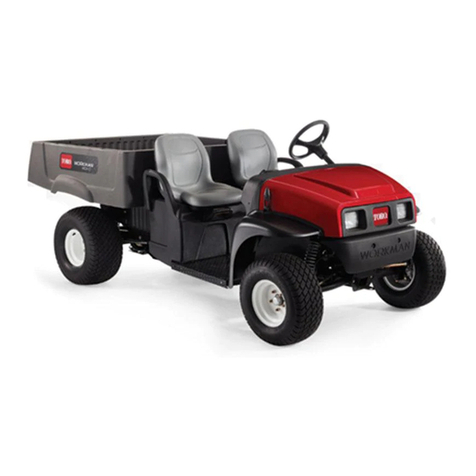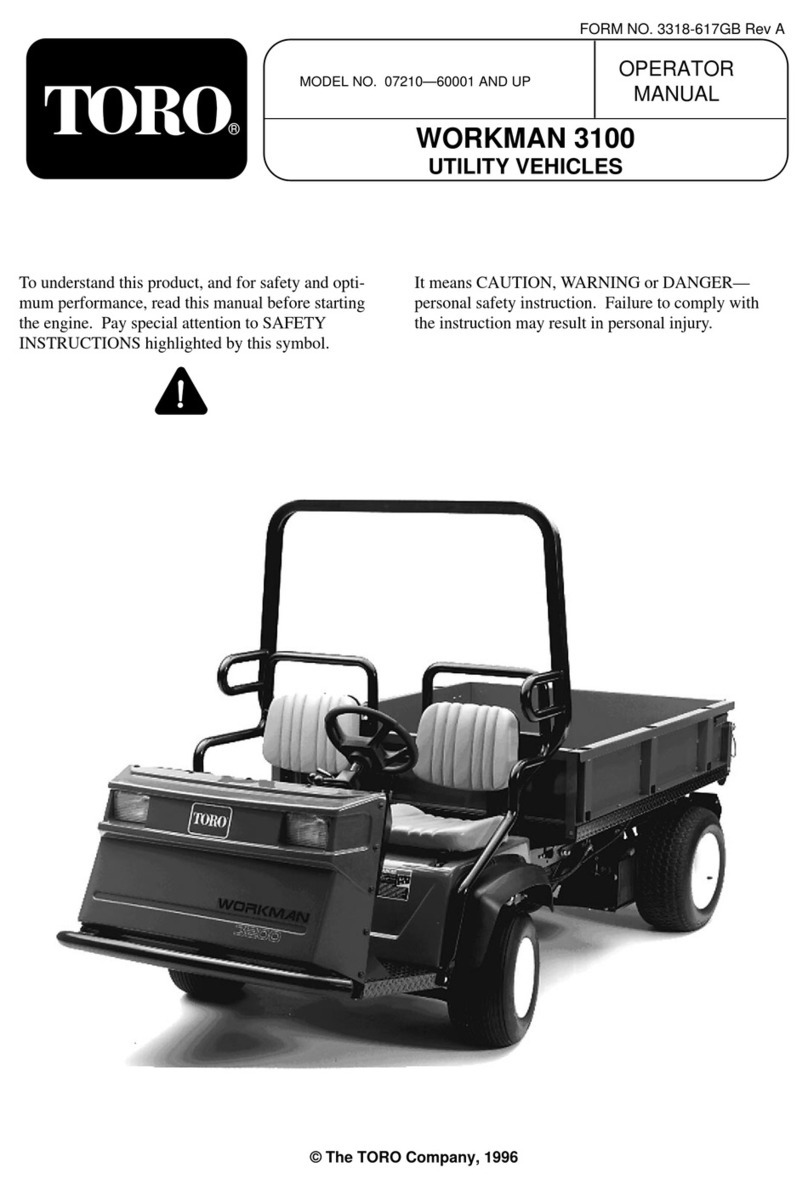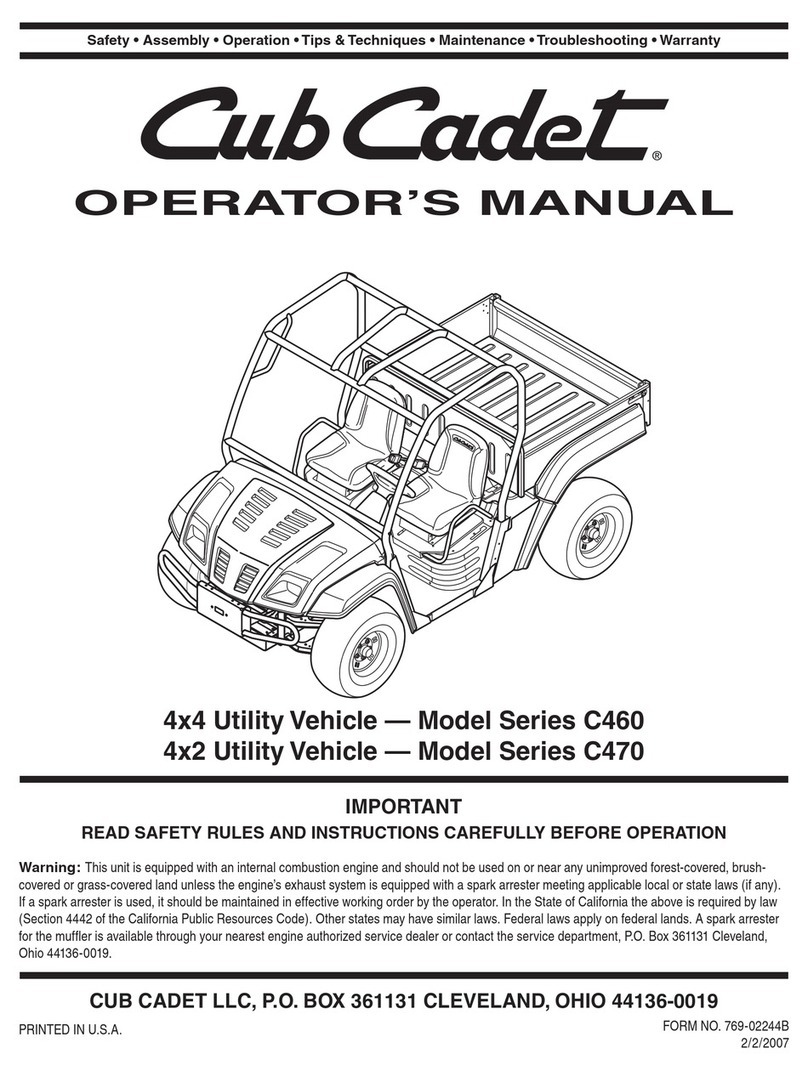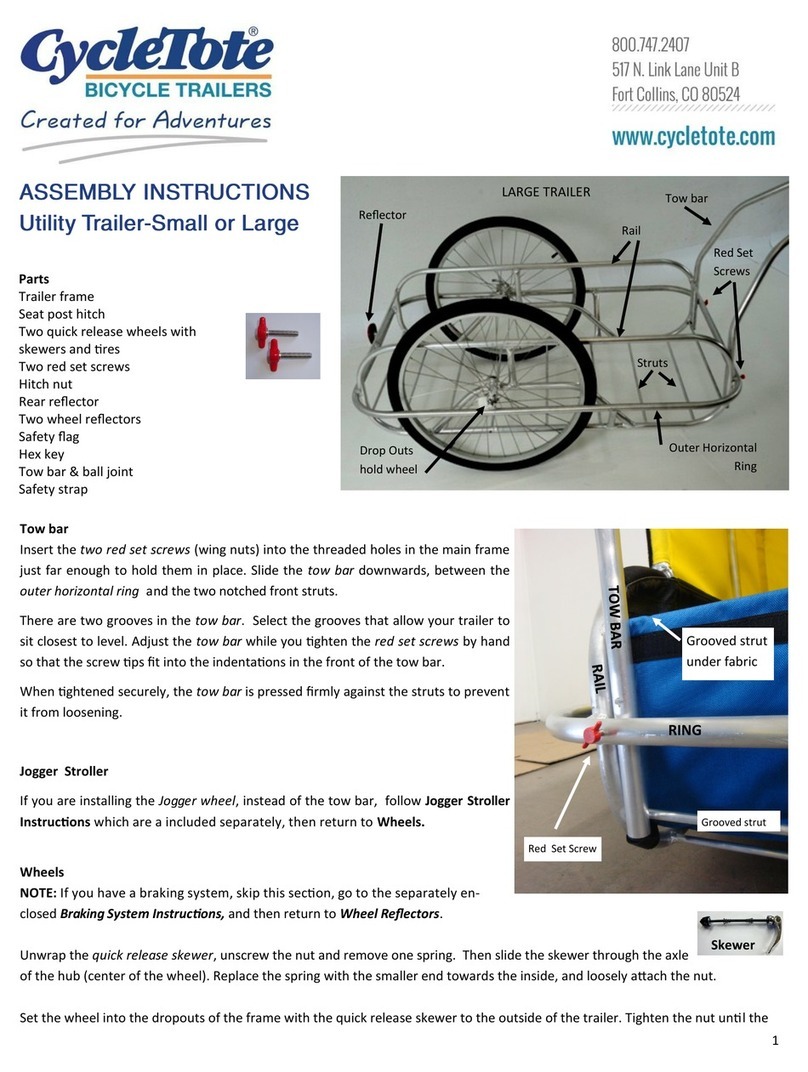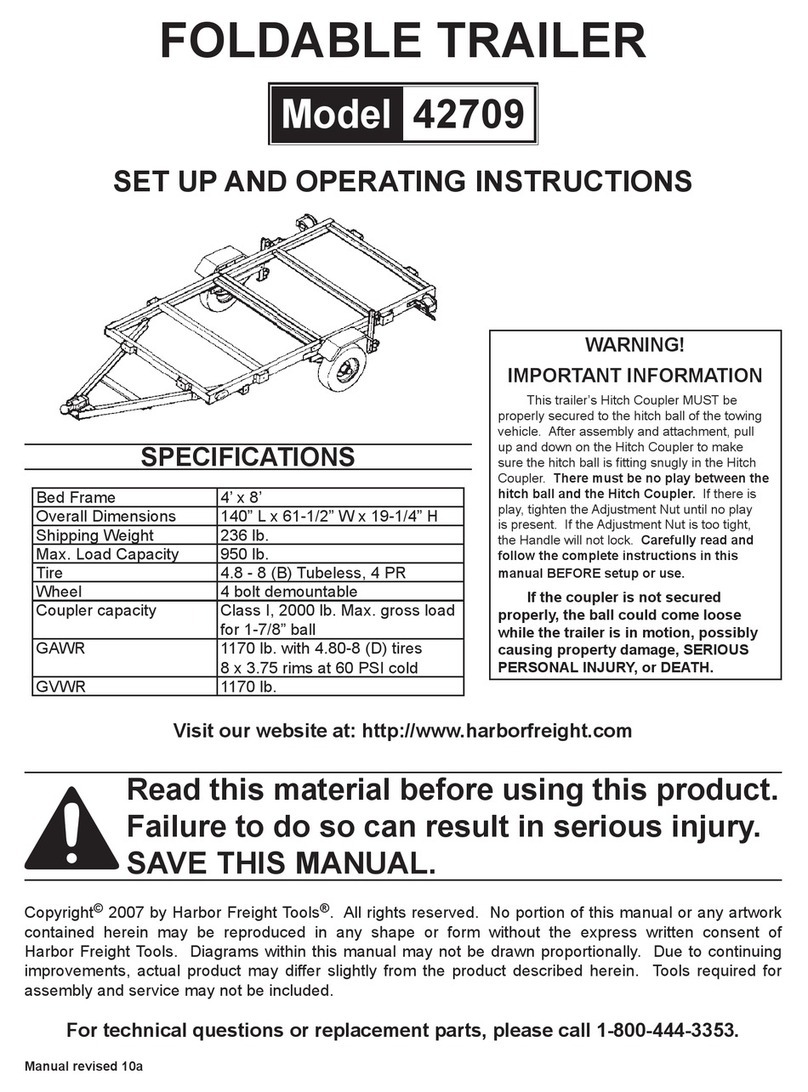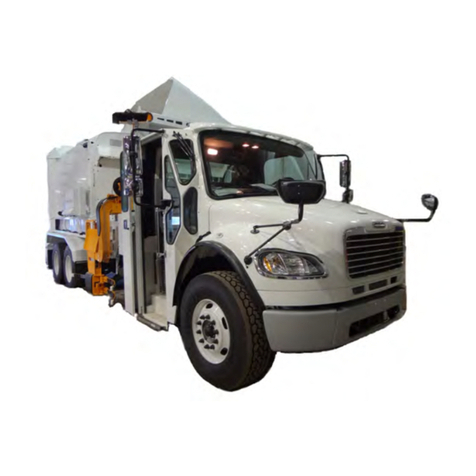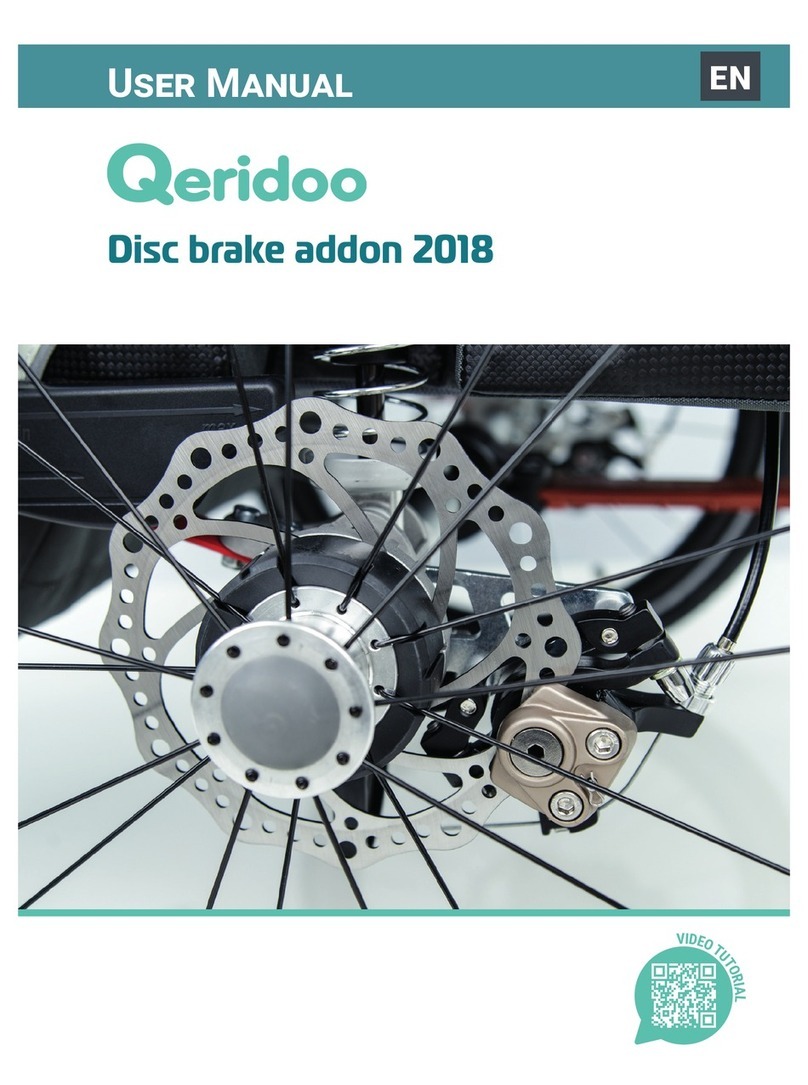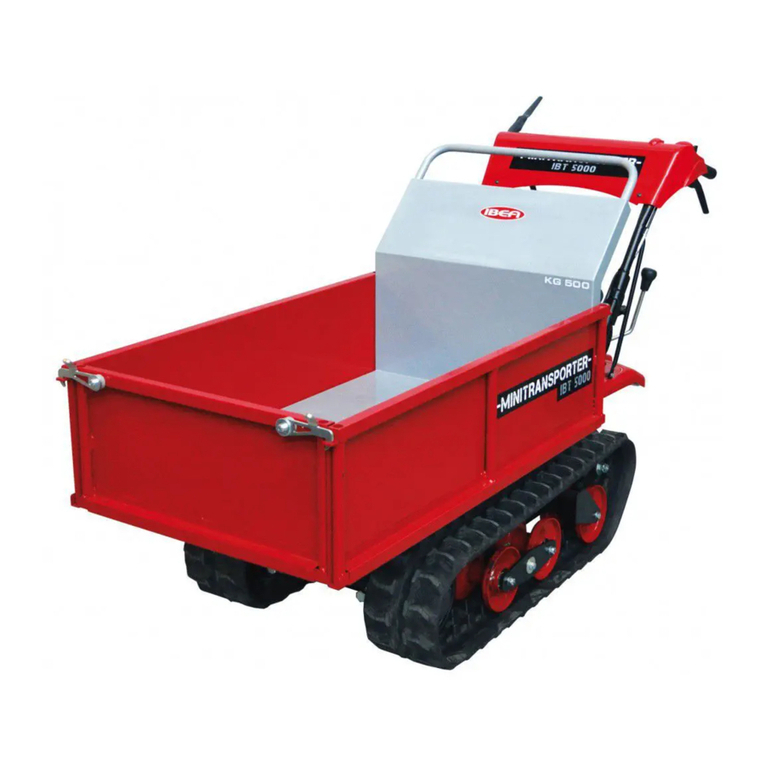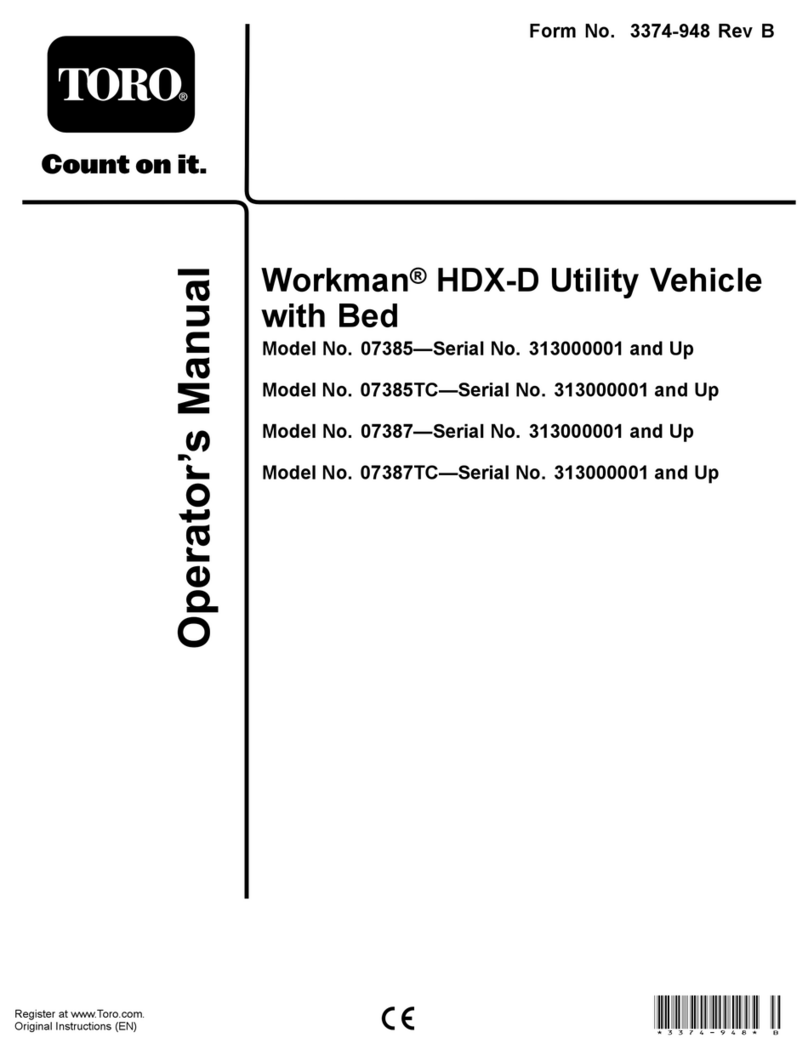FEATHERLITE TRAILERS Horse Trailer User manual

OWNER’S MANUALENCLOSED TRAILERS

Thank You…
From Featherlite Trailers
Dear Customer,
Thank you for purchasing a Featherlite Trailer.
You are now part of tens of thousands in North America who enjoy Featherlite Trailers
for their premium grade construction, innovative features and custom interiors.
Featherlite builds hundreds of different standard and custom-designed aluminum
specialty trailers and transporters. For each and every one, customer satisfaction is
Featherlite’s passion and safety is top priority.
Featherlite knows the most important thing that goes into each and every trailer is what
you, our customer, put in it.That is why the features of all Featherlite trailers are engineered
with the customer and the cargo in mind.
Please know that Featherlite’s dedicated dealers and employees are here for you. Let
Featherlite know how we can be of service now and in the future.
Thanks again and best wishes!
Featherlite Trailers
P.S. Keep current on Featherlite’s innovative new trailers at www.fthr.com.
THANK YOU FOR CHOOSING FEATHERLITE!
Copyright 2015 by Featherlite, Inc. All rights reserved. No part of this publication may be reproduced or transmitted
in any form or by any means, electronic or mechanical, including photocopy, recording or any information storage
and retrieval system, without permission in writing from the copyright proprietor rst obtained.

Featherlite, Inc.
MODEL ENCLOSED TRAILERS
^ WARNING
This User’s Manual contains safety
information and instructions for your
trailer.
You must read this manual before loading
or towing your trailer.
You must follow all safety precautions and
instructions.
Featherlite, Inc.
800-800-1230 Phone
563-547-6100 Facsimile


Table of Contents
ENCLOSED TRAILERS
i
1SAFETY INFORMATION.......................................... 1
1.1 SAFETY ALERT SYMBOLS AND SIGNAL WORDS ......1
1.2 MAJOR HAZARDS....................................................1
1.2.1 Improper Sizing of Trailer to Tow Vehicle........ 1
1.2.2 Driving Too Fast...............................................2
1.2.3 Failure to Adjust Driving Behavior When Towing
a Trailer............................................................. 2
1.2.4 Improper Loading.............................................. 2
1.2.5 Trailer Not Properly Coupled to the Hitch........ 2
1.2.6 Proper Use of Safety Chains .............................3
1.2.7 Proper Connection of Breakaway Brake........... 3
1.2.8 Matching Trailer and Hitch............................... 4
1.2.9 Worn Tires, Loose Wheels and Lug Nuts........... 4
1.2.10 Weight And Load Distribution........................... 4
1.2.11 Shifting Cargo ................................................... 5
1.2.12 Inappropriate Cargo ......................................... 5
1.2.13 Inoperable Brakes, Lights or Mirrors ...............6
1.2.14 Hazards From Modifying Your Trailer............ 6
1.2.15 Hazards to Horses (Horse Trailer)....................7
1.2.16 Hazards to Livestock (Livestock Trailer)...........7
1.2.17 Hazards from Accessories ................................. 7
1.2.18 Generator .......................................................... 7
1.2.19 Shore Power......................................................8
1.2.20 LP Gas Fuel System........................................... 8
1.2.21 Trailer Towing Guide........................................ 9
1.2.22 Safe Trailer Towing Guidelines.........................9
1.2.23 Safety Warning Labels on Your Trailer........... 11
1.2.24 Reporting Safety Defects ................................. 12
2TIRE SAFETY INFORMATION.............................13
2.1 TRAILER TIRE INFORMATION ................................13
2.2 STEPS FOR DETERMINING CORRECT LOAD LIMIT –
TRAILER................................................................14
2.2.1 Trailers 10,000 Pounds GVWR or Less........... 15
2.2.2 Trailers Over 10,000 Pounds GVWR .............. 15
2.3 STEPS FOR DETERMINING CORRECT LOAD LIMIT –
TOW VEHICLE....................................................... 15
2.4 GLOSSARY OF TIRE TERMINOLOGY ......................15
2.5 TIRE SAFETY -EVERYTHING RIDES ON IT............. 18
2.5.1 Safety First–Basic Tire Maintenance .............. 19
2.5.2 Finding Your Vehicle's Recommended Tire
Pressure and Load Limits................................ 19
2.5.3 Understanding Tire Pressure and Load Limits19
2.5.4 Checking Tire Pressure ................................... 19
2.5.5 Steps for Maintaining Proper Tire Pressure... 19
2.5.6 Tire Size........................................................... 20
2.5.7 Tire Tread........................................................20
2.5.8 Tire Balance and Wheel Alignment................. 20
2.5.9 Tire Repair ...................................................... 20
2.5.10 Tire Fundamentals .......................................... 20
2.5.10.a Information on Passenger Vehicle Tires.........20
2.5.10.b UTQGS Information.......................................21
2.5.10.c Information on Light Truck (LT) Tires ..........21
2.5.10.d Information on Special Trailer (ST) Tires......22
2.5.11 Tire Safety Tips................................................ 22
3COUPLING TO THE TOW VEHICLE .................. 24
3.1 USE AN ADEQUATE TOW VEHICLE AND HITCH......24
3.1.1 Trailer Information..........................................24
3.1.2 Tow Vehicle......................................................25
3.2 COUPLING AND UNCOUPLING THE TRAILER...........26
3.2.1 Trailer with Ball Hitch Coupler.......................27
3.2.1.a Before Coupling Trailer to Tow Vehicle........28
3.2.1.b Prepare the Coupler and Hitch .......................29
3.2.1.c Couple the Trailer to the Tow Vehicle (Cequent
Coupler)..........................................................29
3.2.1.d Couple the Trailer to the Tow Vehicle (Demco
Coupler)..........................................................29
3.2.1.e Rig the Safety Chains.....................................30
3.2.1.f Attach and Test Breakaway Brake System .....31
3.2.1.g Connect the Electrical Cables.........................32
3.2.1.h Uncoupling the Ball Hitch Trailer..................32
3.2.2 Trailer with Gooseneck Coupler and Drop-Leg
Jack..................................................................32
3.2.2.a Adjust Gooseneck Hitch Height.....................33
3.2.2.b Drop-Leg Jack(s)............................................34
3.2.2.c Before Coupling Trailer to Tow Vehicle........34
3.2.2.d Prepare Ball Receiver and Gooseneck Ball ....35
3.2.2.e Couple the Trailer to the Tow Vehicle...........35
3.2.2.f Rig the Safety Chains.....................................36
3.2.2.g Attach and Test Breakaway Brake System .....36
3.2.2.h Connect the Electrical Cables.........................37
3.2.2.i Uncoupling the Gooseneck Trailer with Drop-Leg
Jack.................................................................38
3.2.3 Trailer with Fifth Wheel Coupler and Drop-Leg
Jack..................................................................38
3.2.3.a Before Coupling Trailer to the Tow Vehicle..39
3.2.3.b Adjust Hitch Height........................................39
3.2.3.c Prepare the Fifth Wheel Coupler....................40
3.2.3.d Couple the Trailer to the Tow Vehicle...........40
3.2.3.e Attach and Test Breakaway Brake System .....41
3.2.3.f Connect the Electrical Cables.........................42
3.2.3.g Uncoupling the Fifth Wheel Trailer ...............42
4LOADING THE TRAILER.......................................44
4.1 CHECKING TONGUE WEIGHT.................................45
4.2 LOADING CARGO (ENCLOSED TRAILER)................46
4.2.1 Preparing the Trailer for Loading...................46
4.2.2 Loading the Enclosed Trailer ..........................46
4.3 LOADING HORSES (HORSE TRAILER).....................47
4.3.1 Preparing the Horse Trailer for Loading ........47
4.3.2 Loading the Horse Trailer...............................48
4.4 LOADING LIVESTOCK (LIVESTOCK TRAILER).........49
4.4.1 Preparing the Livestock Trailer for Loading...49
4.4.2 Loading the Livestock Trailer..........................50
4.5 SECURING THE CARGO...........................................50
5CHECKINGTHE TRAILERBEFOREANDDURING
EACH TOW.........................................................................51
5.1 PRE-TOW CHECKLIST ............................................51
5.2 MAKE REGULAR STOPS.........................................51
6BREAKING-IN A NEW TRAILER..........................52
6.1 RETIGHTEN LUG NUTS AT FIRST 10, 25 &50 MILES52
6.2 ADJUST BRAKE SHOES AT FIRST 200 MILES (AXLES
RATED 8000 LBS AND BELOW WITH HYDRAULIC BRAKES AND
ALL AXLES WITH AIR BRAKES).........................................52

Table of Contents
ENCLOSED TRAILERS
ii
6.3 SYNCHRONIZING THE BRAKE SYSTEMS .................52
6.4 TIRE PRESSURE......................................................52
7ACCESSORIES...........................................................53
7.1 GASOLINE OR DIESEL-POWERED ELECTRIC
GENERATORS ........................................................53
7.2 ACCESSORY BATTERY...........................................53
7.3 SHORE POWER.......................................................54
7.4 LP GAS FUEL SYSTEM...........................................54
7.4.1 LP Gas System Troubleshooting ......................55
7.5 VENDING &ACCESSORY DOORS ...........................55
7.6 ELECTRIC-POWERED LANDING GEAR ...................56
8INSPECTION, SERVICE & MAINTENANCE.......57
8.1 INSPECTION,SERVICE &MAINTENANCE SUMMARY
CHARTS.................................................................57
8.2 INSPECTION AND SERVICE INSTRUCTIONS..............59
8.2.1 Axle Bolts, Frame, Suspension, & Structure ....59
8.2.2 Trailer Structure...............................................59
8.2.2.a Fasteners and Frame Members .......................59
8.2.2.bWelds..............................................................60
8.2.3 Drop Ramp Torsion Springs ............................60
8.2.4 Slide-Outs.........................................................60
8.2.5 Trailer Brakes (Nev-R-Adjust®ForwardAdjusting
Brakes) .............................................................60
8.2.5.a Periodic Inspection.........................................61
8.2.5.b Brakes, Electric...............................................61
8.2.5.c Brakes, Hydraulic (Vacuum, Air or Electric
Operated)........................................................61
8.2.6 Trailer Brakes (Axles Rated 8000 lbs and Below
with Hydraulic Brakes and ALL Axles with Air Brakes)62
8.2.6.a Initial Inspection.............................................62
8.2.6.b Periodic Inspection.........................................62
8.2.6.c Manually Adjusting Brake Shoes ...................62
8.2.6.d Brakes, Hydraulic (Vacuum, Air or Electric
Operated)........................................................62
8.2.7 Trailer Connection to Tow Vehicle ..................63
8.2.7.a Coupler and Ball.............................................63
8.2.7.b Gooseneck ......................................................63
8.2.7.c Fifth Wheel Kingpin.......................................63
8.2.8 Landing Leg or Jack ........................................63
8.2.9 Lights and Signals............................................64
8.2.10 Accessory Battery.............................................64
8.2.11 Feed Door Latches (Horse Trailers)................64
8.2.12 Tires .................................................................64
8.2.13 Wheel Rims.......................................................64
8.2.14 Wheel Liners (Simulators)................................64
8.2.15 Wheel Bearings ................................................65
8.2.15.a Standard Bearings...........................................65
8.2.15.b E-Z Lube® Bearings (Standard Equipment on
Axles Rated 8000 lbs. and Below)..................66
8.2.15.c Nev-R-Lube™ or Other Sealed Bearings ....66
8.2.16 Lug Nuts (Bolts) ...............................................66
9TECHNICAL REFERENCE.....................................69
9.1 TRAILER LIGHTING ELECTRICAL CONNECTION ......69
9.2 HITCH SYSTEMS ....................................................70
^ WARNING
This User’s Manual contains safety
information and instructions for your
trailer.
You must read this manual before loading
or towing your trailer.
You must follow all safety precautions and
instructions.
“Portions of this manual were used with the expressed
authority of Dexter Axle, but Dexter Axle is not responsible
for the accuracy of the information contained herein.”

R6 3/30/2017 Page 1
1 SAFETY INFORMATION
1.1 SAFETY ALERT SYMBOLS AND SIGNAL
WORDS
This manual provides instructions for the operation
and care of Featherlite Horse, Livestock and
Enclosed Trailers. The instructions in this manual
must be followed to ensure the safety of persons,
horses and livestock, and satisfactory life of the
trailer. Safety precautions to protect against injury
or property damage must be followed at all times.
An Owner’s Manual that provides general trailer
information cannot cover all of the specific details
necessary for the proper combination of every
trailer, tow vehicle and hitch. Therefore, you must
read, understand and follow the instructions given
by the tow vehicle and trailer hitch manufacturers,
as well as the instructions in this manual.
Our trailers are built with components produced by
various manufacturers. Some of these items have
separate instruction manuals. Where this manual
indicates that you should read another manual, and
you do not have that manual, call Featherlite, Inc. at
800-800-1230 or your dealer for assistance.
The safety information in this manual is denoted by
the safety alert symbol: ^
The level of risk is indicated by thefollowingsignal
words.
^ DANGER
DANGER – Immediate hazards which WILL
result in severe personal injury or death if
the warning is ignored.
^ WARNING
WARNING – Hazards or unsafe practices
which COULD result in severe personal
injury or death if the warning is ignored.
^ CAUTION
CAUTION – Hazards or unsafe practices
which could result in minor or moderate
injury if the warning is ignored.
NOTICE
NOTICE – Practices that could result in
damage to the trailer or other property.
1.2 MAJOR HAZARDS
Loss of control of the trailer or trailer/tow vehicle
combination can result in death or serious injury.
The most common causes for loss of control of the
trailer are:
•Improper sizing the trailer for the tow vehicle,
or vice versa.
•Excessive Speed: Driving too fast for the
conditions.
•Failure to adjust driving behavior when towing
a trailer.
•Overloading and/or improper weight
distribution.
•Improper or mis-coupling of the trailer to the
hitch.
•Improper braking and steering under sway
conditions.
•Not maintaining proper tire pressure.
•Not keeping lug nuts tight.
1.2.1 Improper Sizing of the Trailer to the
Tow Vehicle.
Trailers that weigh too much for the towing vehicle
can cause stability problems, which can lead to
death or serious injury. Furthermore, the additional
strain put on the engine and drive-train may lead to
serious tow vehicle maintenance problems. For
these reasons the maximum towingcapacityof your
towing vehicle should not be exceeded. The towing
capacity of your tow vehicle, in terms of maximum
Gross Trailer Weight (GTW) and maximum Gross
Combined Weight Rating (GCWR) can be found in
the tow vehicles Owner’s Manual.

Section 1 – Safety Information
R6 3/30/2017 Page 2
^ DANGER
Use of an under-rated hitch, ball or tow
vehicle can result in loss of control leading
to death or serious injury.
Make certain your hitch and tow vehicle are
rated for your trailer.
1.2.2 Driving Too Fast
With ideal road conditions, the maximum
recommended speed for safely towing a trailer is 60
mph. If you drive too fast, the trailer is more likely
to sway, thus increasing the possibility for loss of
control. Also your tires may overheat, thus
increasing the possibility of a blowout.
^ WARNING
Driving too fast for conditions can result in
loss of control and cause death or serious
injury.
Adjust speed down when towing trailer.
1.2.3 Failure to Adjust Driving Behavior
When Towing a Trailer
When towing a trailer, you will have decreased
acceleration, increased stopping distance, and
increased turning radius (which means you must
make wider turns to keep from hitting curbs,
vehicles, and anything else that is on the inside
corner). Furthermore, the trailer will change the
handling characteristics of your towing vehicle,
making it more sensitive to steering inputs and
more likely to be pushed around in windy
conditions or when being passed by large vehicles.
In addition, you will need a longer distance to pass,
due to slower acceleration and increased length.
With this in mind:
•Be alert for slippery conditions. You are more
likely to be affected by slippery road surfaces
when driving a tow vehicle with a trailer, than
driving a tow vehicle without a trailer.
•Anticipate the trailer “swaying.” Swaying can
be caused by excessive steering, wind gusts,
roadway edges, or by the trailer reaction to the
pressure wave created by passing trucks and
busses.
•When encountering trailer sway, take your foot
off the accelerator, and steer as little as possible
in order to stay on the road. Use small “trim-
like” steering adjustments. Do not attempt to
steer out of the sway; you’ll onlymake it worse.
Also, do not apply the tow vehicle brakes to
correct trailer swaying. The application of the
trailer brakes alone will tend to straighten out
the combination, especially when going
downhill.
•Check rearview mirrors frequently to observe
the trailer and traffic.
•Use lower gear when driving down steep or
long grades. Use the engine and transmission
as a brake. Do not ride the brakes, as they can
overheat and become ineffective.
•Be aware of your trailer height,especiallywhen
approaching bridges, roofed areas and around
trees.
1.2.4 Improper Loading
The total weight of the load you put in or on the
trailer, plus the empty weight of the trailer itself,
must not exceed the trailer's Gross Vehicle Weight
Rating (GVWR). If you do not know the empty
weight of the trailer, you must measure it at a
commercial scale. In addition, you must distribute
the load in the trailer such that the load on any axle
does not exceed the Gross Axle Weight Rating
(GAWR). The GVWR and GAWR’s are listed on
the Certification / VIN label mounted on the front
left side of the trailer.
^ WARNING
An overloaded trailer can result infailureor
in loss of control of the trailer, leading to
death or serious injury.
Never load a trailer so that the weight on
any tire exceeds its rating.
Never exceed the trailer Gross Vehicle
Weight Rating (GVWR).
Never exceed an axle Gross Axle Weight
Rating (GAWR).
1.2.5 Trailer Not Properly Coupled to the
Hitch
It is critical that the trailer be securely coupled to
the hitch, and that the safety chains and emergency
breakaway brake lanyard are correctly attached.

Section 1 – Safety Information
R6 3/30/2017 Page 3
Uncoupling may result in death or serious injury to
you and to others.
^ WARNING
Coupler and hitch selection and condition
are critical for safe towing.
Uncoupling can result in death or serious
injury.
•Make sure the hitch and ball are rated
for the trailer.
•Make sure the hitch [ball size] matches
the coupler.
•Check the hitch ball for wear, corrosion
and cracks before coupling. Replace
worn, corroded or cracked hitch ball
before coupling to the trailer.
•Make sure the hitch ball is tight to the
hitch before coupling the trailer.
^ WARNING
An improperly coupled trailer can result in
death or serious injury.
Do not move the trailer until:
•The coupler is secured and locked;
•The safety chains are secured to the
tow vehicle; and
•The trailer jacks are fully retracted.
Do not tow the trailer on the road until:
•The trailer brakes are checked;
•The breakaway switch is connected to
the tow vehicle;
•The load is secured to the trailer; and
•The trailer lights are connected and
checked.
1.2.6 Proper Use of Safety Chains
Safety chains are provided so that control of the
trailer can still be maintained if the trailer comes
loose from the tow vehicle for any reason.
^ WARNING
Incorrect rigging of the safety chains can
result in loss of control of the trailer and
tow vehicle, leading to death or serious
injury, if the trailer uncouples from the tow
vehicle.
Chains must:
•Fasten to frame of tow vehicle, not to
hitch or ball.
•Cross underneath hitch and coupler
with minimum slack to permit turning
and to hold tongue up, if the trailer
comes loose.
1.2.7 Proper Connection of Breakaway
Brake
If equipped with brakes, your trailer will be
equipped with a breakaway brake system that can
apply the brakes on your trailer, if your trailer
comes loose from the hitch for any reason. You
will have a separate set of instructions for the
breakaway brake if your trailer is so equipped. The
breakaway brake system, including battery, must be
in good condition and properly rigged to be
effective.
^ WARNING
An ineffective breakaway brake system can
result in a runaway trailer, leading to death
or serious injury if the coupler or ball hitch
fails.
Test the function of the breakaway brake
system before towing the trailer. Do not
tow the trailer if the breakaway brake
system is not working; have it serviced or
repaired.
Connect the breakaway lanyard to the tow
vehicle -
NOT to the safety chain; and
NOT to the hitch, ball or support.

Section 1 – Safety Information
R6 3/30/2017 Page 4
1.2.8 Matching Trailer and Hitch
^ DANGER
Use of an under-rated hitch, ball or tow
vehicle can result in loss of control leading
to death or serious injury.
Make certain your hitch and tow vehicle are
rated for your trailer.
1.2.9 Worn Tires, Loose Wheels and Lug
Nuts
Just as with your tow vehicle, the trailer tires and
wheels are important safety items. Therefore, it is
essential to inspect the trailer tires before each tow.
If a tire has a bald spot, bulge, cut, cracks, or is
showing any cords, replace the tire before towing.
If a tire has uneven tread wear, take the trailer to a
dealer service center for diagnosis. Uneven tread
wear can be caused by tire imbalance, axle
misalignment or incorrect inflation.
Tires with too little tread will not provide adequate
frictional forces on wet roadways and can result in
loss of control, leading to death or serious injury.
Improper tire pressure causes increased tire wear
and may reduce trailer stability, which can result in
a tire blowout or possible loss of control.
Therefore, before each tow you must also check the
tire pressure. Remember, the proper tire pressureis
listed on the Certification (VIN) label, and should
be checked when tires are cold. Allow 3 hours
cool-down after driving as much as 1 mile at 40
mph before checking tire pressure.
^ WARNING
Improper tire pressure may
cause an
unstable trailer. Blowout and
loss of
control may occur. Death or serious injury
can result.
Make sure of proper tire pressure before
towing trailer. Inflate tires to pressure
indicated on Certification / VIN label.
The tightness of the lug nuts is very important in
keeping the wheels properly seated to the hub.
Before each tow, check to make sure they are
tightened to the proper torque.
^ WARNING
Metal creep between the wheel rim and lug
nuts (bolts) will cause rim to loosen.
Death or injury can occur if wheel comes
off.
Tighten lug nuts (bolts) before each tow.
The proper tightening sequence and tightness
(torque) for lug nuts is listed in the “Inspection,
Service & Maintenance” chapter of this manual.
Use a calibrated torque wrench to tighten the lug
nuts.
Lug nuts are also prone to loosen after first being
assembled. When driving a new trailer (or after
wheels have been remounted), check to make sure
they are tightened to the proper torque after the first
10, 25 and 50 miles of driving and before each tow
thereafter.
Failure to perform this check can result in a wheel
parting from the trailer and a crash, leadingto death
or serious injury.
^ WARNING
Lug nuts are prone to loosen after being
first assembled. Death or serious injury
can result.
Check lug nuts for tightness on a new
trailer, and after re-mounting a wheel at 10,
25 and 50 miles.
^ WARNING
Inadequate lug nut torque can cause a
wheel to part while towing. Death or
serious injury can result.
Make sure lug nuts are tight before towing
trailer.
1.2.10 Weight And Load Distribution
Proper loading of your trailer is essential for your
safety. Tire, wheel, axle or structural failure can be
caused by overloading.

Section 1 – Safety Information
R6 3/30/2017 Page 5
^ WARNING
An overloaded trailer can result infailureor
in loss of control of the trailer, leading to
death or serious injury.
Never load a trailer so that the weight on
any tire exceeds its rating.
Never exceed the trailer Gross Vehicle
Weight Rating (GVWR).
Never exceed an axle Gross Axle Weight
Rating (GAWR).
Improper front / rear load distribution can lead to
poor trailer sway stability or poor tow vehicle
handling. Poor trailer sway stability results from
tongue weights that are too low, and poor tow
vehicle stability results from tongue weights that are
too high.
In figure 1-1, the second column shows the rule of
thumb percentage of total weight of the trailer, plus
its cargo (Gross Trailer Weight, or “GTW”) that
should appear on the tongue of the trailer. For
example, a trailer with a gooseneck hitch, with a
loaded weight of 12,000 pounds, should have 20-
25% of 12,000 pounds (2400-3000 lbs.) on the
gooseneck. After loading, be sure to check that
none of the axles are overloaded.
Tongue Weight as a Percentage of Loaded
Trailer Weight
Type of Hitch Percentage
Ball Hitch (or Bumper Hitch)
10–15% for
large trailers
6-10% for
smaller utility
and cargo
trailers
Gooseneck Hitch 20–25%
Fifth Wheel Hitch
Tongue Weight Chart – Figure 1-1
Uneven left / right load distribution can cause tire,
wheel, axle or structural failure. Be sure your
trailer is evenly loaded left / right.
Towing stability also depends onkeeping thecenter
of gravity as low as possible.
^ WARNING
An improperly distributed load can result in
loss of control of the trailer, and can leadto
death or serious injury.
Proper tongue weight is essential for stable
trailer handling.
Distribute the load front to rear to provide
proper tongue weight.
Distribute the load evenly, right and left, to
avoid tire overload.
Keeping the center of gravity low and
centered is essential to minimizetheriskof
tip-over.
1.2.11 Shifting Cargo
Since the trailer “ride” can be bumpy and rough,
you must secure your cargo so that it does not shift
while the trailer is being towed.
^ WARNING
A shifting load can result in failure, or to
loss of control of the trailer, and can leadto
death or serious injury.
You must tie down all loads with proper
sized fasteners, ropes, straps, etc. to
prevent the load from shifting while
trailering.
If the door latch is equipped with a catch that has a
hole for a linchpin, use a linchpin to prevent the
door latch from opening.
^ WARNING
Always secure the door latch after closing.
Place a linchpin in the catch.
If the door opens, your car
go may be
ejected onto the road, resulting in death or
serious injury to the animals or other
drivers.
1.2.12 Inappropriate Cargo
Your trailer may be designed for specific cargo, for
example, only for horses. If your trailer is designed
for specific cargo, only carry that cargo in the
trailer. Your trailer must not be used to carry

Section 1 – Safety Information
R6 3/30/2017 Page 6
certain items, such as people, containers of
hazardous substances or containers of flammable
substances. A trailer not designed with living
quarters should only be used for transportation of its
intended cargo.
^ DANGER
You can die or be brain damaged by
Carbon Monoxide.
Do not operate a generator, portable grills,
portable heaters, portable lanterns or
portable stoves inside the trailer.
^ WARNING
Never transport people inside your
Featherlite trailer, even if it has living
quarters. Besides puttingtheir lives at risk,
the transport of people may be illegal.
^ WARNING
Do not sleep in a trailer not equipped with
living quarters.
A trailer not designed with living quarters
should only be used for transportation of
its intended cargo.
^ WARNING
Your Featherlite trailer is not capable of
safely transporting flammable, explosive,
poisonous or other dangerous materials.
^ WARNING
Do not haul “loose” livestock in your horse
trailer.
Use a trailer designed to haul “loose”
livestock.
1.2.13 Inoperable Brakes, Lights or Mirrors
Be sure that the brakes (if equipped) and all of the
lights on your trailer are functioning properly before
towing your trailer. Electric brakes and lights on a
trailer are controlled via a connection to the tow
vehicle, generally a multi-pin electrical connector.
Check the trailer taillights by turning on your tow
vehicle headlights. Check the trailerbrake lightsby
having someone step on the tow vehicle brake pedal
while you look at trailer lights. Check the turn
signal lights by operating the turn signal lever in the
tow vehicle.
If your trailer has electric brakes, your tow vehicle
will have an electric brake controller that sends
power to the trailer brakes. Before towing the
trailer on the road, you must operate the brake
controller while trying to pull the trailer in order to
confirm that the electric brakes operate. While
towing the trailer at less than 5 mph, manually
operate the electric brake controller in the tow
vehicle cab. You should feel the operation of the
trailer brakes.
^ WARNING
Failure to connect the tow vehicle lighting
and braking to the trailer will result in
inoperable lights and brakes, and can lead
to collision.
Check that all the trailer lights and brakes
work before each tow.
If your trailer has hydraulic “surge” brakes, pull the
emergency breakaway brake lanyard to check the
operation of the surge mechanism.
Standard mirrors usually do not provide adequate
visibility for viewing traffic to the sides and rear a
towed trailer. You must provide mirrors that allow
you to safely observe approaching traffic.
1.2.14 Hazards From Modifying Your
Trailer
Essential safety items and structural integrity can be
damaged by altering your trailer. Even simply
driving a nail or screw can damage an electrical
circuit, LP gas line or other feature of the trailer.
Before making any alteration to your trailer, contact
your dealer or Featherlite, Inc. at 800-800-1230 and
describe the alteration you are contemplating.
Alteration of the trailer structure or modification of
mechanical, electrical, plumbing, heating or other
systems on your trailer must be performed only by
qualified technicians who are familiar with the
system as installed on your trailer.

Section 1 – Safety Information
R6 3/30/2017 Page 7
1.2.15 Hazards to Horses (Horse Trailer)
Before hauling a horse, you must be aware of its
temperament.
The layout of a horse trailer is designed to safely
contain your horse. The trailer is equipped with
stall dividers and tie rings to secure the horse, and
has a rubber floor mat to keep shoed horses from
slipping on the metal underfloor. Restraining a
horse without using a combination ofa tie-strap and
stall dividers may result in serious injuryor death to
the horse.
Before loading your horse, inspect the interior of
the horse trailer to insure that no hazards are
present. Read section 4.3 “Loading Horses (Horse
Trailer)” for specific instructions regarding
trailering of horses.
^ WARNING
Handling a horse that is not trailer-
acclimated may result in injury or death, or
damage to your trailer.
Do not haul an unbroken horse in this
trailer.
Horses must have a halter.
^ WARNING
Failure to secure a horse using a tie strap
may result in serious injury or death to
persons and/or the horse.
^ CAUTION
The interior space of a trailer may contain
hazards that result in serious injury or
death to a trailered horse.
Inspect the interior of the trailer before
loading a horse.
Adjust or repair all loose and protruding
features such as handles, loose or broken
parts of the trailer, etc.
Lock all stall dividers before towing
trailer.
All saddles, tack and equipment, as well
as horse(s), must be prevented from
being thrown about before towing trailer.
^ CAUTION
Hauling a horse in a livestock trailer may
result in its serious injury or death.
Do not carry a horse in a livestock trailer.
Use a trailer designed to carry horses.
1.2.16 Hazards to Livestock (Livestock
Trailer)
A livestock trailer is designed for the safe transport
of livestock, other than horses. It is not equipped
for hauling horses.
Before loading your livestock, inspect the interior of
the livestock trailer to insure that no hazards are
present. Read section 4.4, “Loading Livestock
(Livestock Trailer)” for specific instructions
regarding trailering of livestock other than horses.
^ WARNING
Large animals are capable of inflicting
serious injury or death to a human handler.
Know your animals before attempting to
trailer them.
^ CAUTION
Hauling a horse in a livestock trailer may
result in its serious injury or death.
Do not carry a horse in a livestock trailer.
Use a trailer designed to carry horses.
1.2.17 Hazards from Accessories
The “Accessories” chapter of this manual contains
some information about certain optional accessories
that may be on your trailer. Read and follow all of
these instructions before operating the accessories.
The major hazards from some of these accessories
are:
1.2.18 Generator
If your trailer is equipped with a gasoline or diesel
generator, you must have and follow the generator
manufacturer’s instructions. You must also have
one or more carbon monoxide detectors in the
trailer's accommodation spaces.

Section 1 – Safety Information
R6 3/30/2017 Page 8
Carbon Monoxide is an odorless gas that can cause
death. Be certain exhaust from a running generator
does not accumulate in or around your trailer, by
situations such as:
•Being drawn in by fans or ventilators operated
in a trailer;
•Prevailing wind;
•Being trapped between your trailer and other
trailers, vehicles or buildings; or
•Being trapped between your trailer and, or in a
snow bank, or other nearby objects
^ WARNING
Gasoline and diesel generators pose a risk
of death from:
•Carbon Monoxide
•Fire and Explosion
•Electrocution
Do not operate a generator without having
a working carbon monoxide detector.
Do not refuel a running generator.
Do not refuel near ignition sources.
1.2.19 Shore Power
“Shore Power” is the name given to connecting
your trailer to a source of electrical power using a
cord specifically designed for that purpose.
^ WARNING
Shore power poses a risk of death due to
electrocution.
Always use a grounded connection.
Never connect to an ungrounded source of
shore power.
Never remove the “third prong” from the
shore power plug.
^ WARNING
Risk of fire.
Connect only to source of correct voltage.
Do not overload electrical circuits.
Do not use an extension cord to connect to
shore power.
Replace fuses with like rating.
1.2.20 LP Gas Fuel System
^ DANGER
You can die or be brain damaged by
Carbon Monoxide.
Make certain the exhaust from LP
appliances is directed to the outdoors.
Have a working carbon monoxide detector
in the accommodation spaces of your
trailer before operating any LP gas
appliance.
Do not operate portable grills, portable
stov
es, portable lanterns or portable
heaters inside the trailer.
^ WARNING
Risk of death due to fire or explosion.
Do not connect an LP gas system to a
supply of natural gas.
Extinguish all pilot lights and turn off all
appliances before refilling fuel or LP gas
tanks.
Do not fill the tank with any gas other than
LP (butane or propane).
Do not store LP gas tanks insidethetrailer.

Section 1 – Safety Information
R6 3/30/2017 Page 9
^ WARNING
Risk of fire or explosion
If LP gas is detected (by smell or by the LP
gas detector):
•Do not touch electrical switches
•Extinguish flames and pilot lights
•Open doors for ventilation
•Shut off LP gas supply at the LP tank
•Leave the area until odor clears
Correct the source of LP gas leakage
before using LP appliances.
Do not use a flame to locate the source of
an LP gas leak.
1.2.21 Trailer Towing Guide
Driving a vehicle with a trailer in tow is vastly
different from driving the same vehicle without a
trailer in tow. Acceleration, maneuverability and
braking are all diminished with a trailer in tow. It
takes longer to get up to speed, you need moreroom
to turn and pass, and more distance to stop when
towing a trailer. You will need to spend time
adjusting to the different feel and maneuverability
of the tow vehicle with a loaded trailer. Because of
the significant differences in all aspects of
maneuverability when towing a trailer, the hazards
and risks of injury are also much greater than when
driving without a trailer. You are responsible for
keeping your vehicle and trailer in control, and for
all the damage that is caused if you lose control of
your vehicle and trailer.
As you did when learning to drive an automobile,
find an open area with little or no traffic for your
first practice trailering. Of course, before you start
towing the trailer, you must follow all of the
instructions for inspection, testing, loading and
coupling. Also, before you start towing, adjust the
mirrors so you can see the trailer as well as the area
to the rear of it.
Drive slowly at first, 5 m.p.h. or so, and turn the
wheel to get the feel of how the tow vehicle and
trailer combination responds. Next, make some
right and left hand turns. Watch in your side
mirrors to see how the trailer follows the tow
vehicle. Turning with a trailer attached requires
more room.
Stop the rig a few times from speeds no greater than
10 m.p.h. If your trailer is equipped with brakes,
try using different combinations of trailer/electric
brake and tow vehicle brake. Note the effect that
the trailer brakes have when they are the only
brakes used. When properly adjusted, the trailer
brakes will come on just before the tow vehicle
brakes.
It will take practice to learn how to back up a tow
vehicle with a trailer attached. Take it slow.
Before backing up, get out of the tow vehicle and
look behind the trailer to make sure that there are no
obstacles. Some drivers place their hands at the
bottom of the steering wheel, and while the tow
vehicle is in reverse, “think” of the hands as being
on the top of the wheel. When the hands move to
the right (counter-clockwise, as you would do to
turn the tow vehicle to the left when moving
forward), the rear of the trailer moves to the right.
Conversely, rotating the steering wheel clockwise
with your hands at the bottom of the wheel will
move the rear of the trailer to the left, while backing
up. If you are towing a bumper hitch rig, be careful
not to allow the trailer to turn too much, because it
will hit the rear of the tow vehicle. To straighten
the rig, either pull forward, or turn the steering
wheel in the opposite direction.
1.2.22 Safe Trailer Towing Guidelines
•Recheck the load tiedowns to make sure the
load will not shift during towing.
•Before towing, check coupling, safety chain,
safety brake, tires, wheels and lights.
•Check the lug nuts or bolts for tightness.
•Check coupler tightness after towing 50 miles.
•Adjust the brake controller to engage the trailer
brakes before the tow vehicle brakes. Your
dealer can assist you by making this
adjustment.
•Use your mirrors to verify that you have room
to change lanes or pull into traffic.
•Use your turn signals well in advance.
•Allow plenty of stopping space for your trailer
and tow vehicle.
•Do not drive so fast that the trailer begins to
sway due to speed. Never drive faster than 60
m.p.h.
•Allow plenty of room for passing. A rule of
thumb is that the passing distance with a trailer
is 4 times the passing distance without a trailer.

Section 1 – Safety Information
R6 3/30/2017 Page 10
•Shift your automatic transmission into a lower
gear for city driving.
•Use lower gears for climbing and descending
grades.
•Do not ride the brakes while descending grades,
they may get so hot that they stop working.
Then you will potentially have a runaway tow
vehicle and trailer.
•To conserve fuel, don't use full throttle to climb
a hill. Instead, build speed on the approach.
•Slow down for bumps in the road. Take your
foot off the brake when crossing the bump.
•Do not brake while in a curve unless absolutely
necessary. Instead, slow down before you enter
the curve and power through the curve. This
way, the towing vehicle remains “n charge.”
•Do not apply the brakes to correct extreme
trailer swaying. The application of the trailer
brakes alone will tend to straighten out the
combination, especially when going downhill.
•Make regular stops, about once each hour.
Confirm that
•the coupler is secure to the hitch and is
locked,
•electrical connectors are made,
•there is appropriate slack in the safety
chains,
•there is appropriate slack in the breakaway
switch pullpin lanyard,
•the tires are not visibly low on pressure,
and
•the cargo is secure and in good condition.

Section 1 – Safety Information
R6 3/30/2017 Page 11
1.2.23 Safety Warning Labels on Your Trailer
Warning Labels and Locations – Gooseneck Trailer – Figure 1-2
Warning Labels and Locations – Bumper Pull Trailer – Figure 1-3
^ WARNING
To protect you and others against death or
serious injury, all of the labels shown
above must be on the trailer and must be
legible.
If any of these safety labels are missing or
cannot be read, call Featherlite, Inc. at 800-
800-1230 for free replacement labels.
You will need to provide us with the
number shown at the bottom of the label(s)
in order for us to send the correct one(s).

Section 1 – Safety Information
R6 3/30/2017 Page 12
1.2.24 Reporting Safety Defects
If you believe that your vehicle has a defect that
could cause a crash or could cause injury or death,
you should immediately inform the National
Highway Traffic Safety Administration (NHTSA)
in addition to notifying us.
If NHTSA receives similar complaints, it mayopen
an investigation, and if it finds that a safety defect
exists in a group of vehicles, it may order a recall
and remedy campaign. However, NHTSA cannot
become involved in individual problems between
you, your dealer, or us.
To contact NHTSA, you may either call the Vehicle
Safety Hotline toll-free at 1-888-327-4236 (TTY:1-
800-424-9153), go to http://www.safercar.gov, or
write to: Administrator, NHTSA, 1200 New Jersey
Ave., SE, Washington, DC 20590.
You can also obtain other information about motor
vehicle safety from http://www.safercar.gov.
Call 800-800-1230 to reach Featherlite, Inc.

R6 3/30/2017 Page 13
2 TIRE SAFETY INFORMATION
This portion of the User’s Manual contains tire
safety information as required by 49 CFR 575.6.
Section 2.1 contains “Trailer Tire Information”
Section 2.2 contains “Steps for Determining Correct
Load Limit - Trailer”.
Section 2.3 contains “Steps for Determining Correct
Load Limit – Tow Vehicle”.
Section 2.4 contains a Glossary of Tire
Terminology, including “cold inflation pressure”,
“maximum inflation pressure”, “recommended
inflation pressure”, and other non-technical terms.
Section 2.5 contains information from the NHTSA
brochure entitled “Tire Safety – Everything Rides
On It”.
This brochure, as well as the preceding subsections,
describes the following items;
•Tire labeling, including a description and
explanation of each marking on the tires, and
information about the DOT Tire Identification
Number (TIN).
•Recommended tire inflation pressure, including
a description and explanation of:
•Cold inflation pressure.
•Vehicle Placard and location on the
vehicle.
•Adverse safety consequences of under
inflation (including tire failure).
•Measuring and adjusting air pressure for
proper inflation.
•Tire Care, including maintenance and safety
practices.
•Vehicle load limits, including a description and
explanation of the following items:
•Locating and understanding the load limit
information, total load capacity, and cargo
capacity.
•Calculating total and cargo capacities with
varying seating configurations including
quantitative examples showing / illustrating
how the vehicles cargo and luggage
capacity decreases as combined number
and size of occupants’ increases. This item
is also discussed in Section 3.
•Determining compatibility of tire and
vehicle load capabilities.
•Adverse safety consequences of
overloading on handling and stopping on
tires.
2.1 TRAILER TIRE INFORMATION
Trailer tires may be worn out even though theystill
have plenty of tread left. This is because trailer
tires have to carry a lot of weight all the time, even
when not in use. It is actually better for the tire to
be rolling down the road than to be idle. During
use, the tire releases lubricants that are beneficialto
tire life. Using the trailer tires often also helps
prevent flat spots from developing.
The main cause of tire failure is improper inflation.
Check the cold tire inflation pressures at least once
a week for proper inflation levels. “Cold” means
that the tires are at the same temperature as the
surrounding air, such as when the vehicle has been
parked overnight. Wheel and tire manufacturers
recommend adjusting the air pressure to the trailer
manufacturer’s recommended cold inflation
pressure, in pounds per square inch (PSI) stated on
the vehicle’s Federal Certification Label or Tire
Placard when the trailer is loaded to its gross
vehicle weight rating (GVWR). If the tires are
inflated to less than the recommended inflation
level or the GVWR of the trailer is exceeded, the
load carrying capacity of the tire could be
dramatically affected. If the tires are inflated more
than the recommended inflation level, handling
characteristics of the tow vehicle/trailer
combination could be affected. Refer to the
owner’s manual or talk to your dealer or vehicle
manufacturer if you have any questions regarding
proper inflation practices.
Tires can lose air over a period of time. In fact, tires
can lose 1 to 3 PSI per month. This is because
molecules of air, under pressure, weave their way
from the inside of the tire, through the rubber,tothe
outside. A drop in tire pressure could cause the tire
to become overloaded, leading to excessive heat
build up. If a trailer tire is under-inflated, even for
a short period of time, the tire could suffer internal
damage.

Section 2 - Tire Safety Information
R6 3/30/2017 Page 14
High speed towing in hot conditions degrades
trailer tires significantly. As heat builds up during
driving, the tire’s internal structure starts to
breakdown, compromising the strength of the tire.
It is recommended to drive at moderate speeds.
Statistics indicate the average life of a trailer tire is
about five years under normal use and maintenance
conditions. After three years, replacing the trailer
tires with new ones should be considered, even if
the tires have adequate tread depth. Some experts
claim that after five years, trailer tires are
considered worn out and shouldbe replaced,even if
they have had minimal or no use. This is such a
general statement that it may not apply in all cases.
It is best to have your tires inspected by a tire
supplier to determine if your tires need to be
replaced.
If you are storing your trailer for an extended
period, make sure the tires are fully inflated to the
maximum rated pressure and that you store them in
a cool, dry place, such as a garage. Use tire covers
to protect the trailer tires from the harsh effects of
the sun.
2.2 STEPS FOR DETERMINING CORRECT
LOAD LIMIT –TRAILER
Determining the load limits of a trailer includes
more than understanding the load limits of the tires
alone. On all trailers there is a Federal Certification
/ VIN label that is located on the forward half of the
left (road) side of the unit. This certification/VIN
label will indicate the trailer’s Gross Vehicle
Weight Rating (GVWR). This is the most weight
the fully loaded trailer can weigh. It will also
provide the Gross Axle Weight Rating (GAWR).
This is the most a particular axle can weigh. If there
are multiple axles, the GAWR of each axle will be
provided.
If your trailer has a GVWR of 10,000 pounds or
less, there is a vehicle placard located in the same
location as the certification label described above.
This placard provides tire and loading information.
In addition, this placard will show a statement
regarding maximum cargo capacity. Cargo can be
added to the trailer, up to the maximum weight
specified on the placard. The combined weight of
the cargo is provided as a single number. In any
case, remember: the total weight of a fully loaded
trailer can not exceed the stated GVWR.
For trailers with living quarters installed, theweight
of water and propane also need to be considered.
The weight of fully filled propane containers is
considered part of the weight of the trailer before it
is loaded with cargo, and is not considered part of
the disposable cargo load. Water however, is a
disposable cargo weight and is treated as such. If
there is a fresh water storage tank of 100 gallons,
this tank when filled would weigh about 800
pounds. If more cargo is being transported, water
can be off-loaded to keep the total amount of cargo
added to the vehicle within the limits of the GVWR
so as not to overload the vehicle. Understanding
this flexibility will allow you, the owner, to make
choices that fit your travel needs.
When loading your cargo, be sure it is distributed
evenly to prevent overloading front to backand side
to side. Heavy items should be placed low and as
close to the axle positions as reasonable. Too many
items on one side may overload a tire. The best way
to know the actual weight of the vehicle is to weigh
it at a public scale. Talk to your dealer to discuss
the weighing methods needed to capture the various
weights related to the trailer. This would include the
weight empty or unloaded, weights per axle, wheel,
hitch or king-pin, and total weight.
Excessive loads and/or underinflation cause tire
overloading and, as a result, abnormal tire flexing
occurs. This situation can generate an excessive
amount of heat within the tire. Excessive heat may
lead to tire failure. It is the air pressure that enables
a tire to support the load, so proper inflation is
critical. The proper air pressure may be found on
the Certification / VIN label and/or on the Tire
Placard. This value should never exceed the
maximum cold inflation pressure stamped on the
tire.
This manual suits for next models
2
Table of contents
Popular Utility Vehicle manuals by other brands
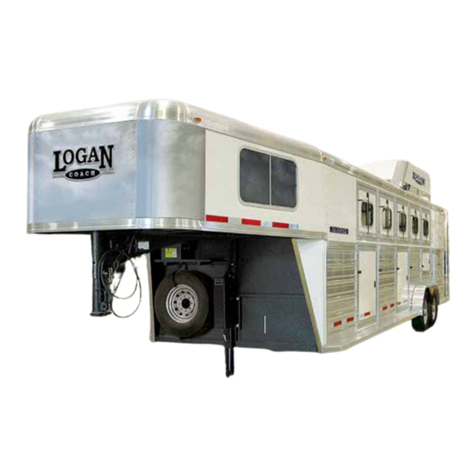
Logan
Logan RAMPAGE owner's manual
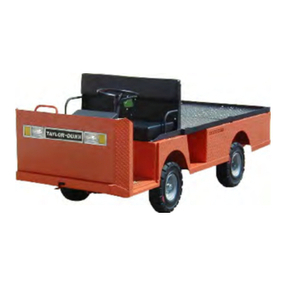
Taylor-Dunn
Taylor-Dunn BurdenMaster B 2-00 Operation, t roubleshooting and replacement parts manual

HAKO
HAKO -Jonas 1500 V instruction manual
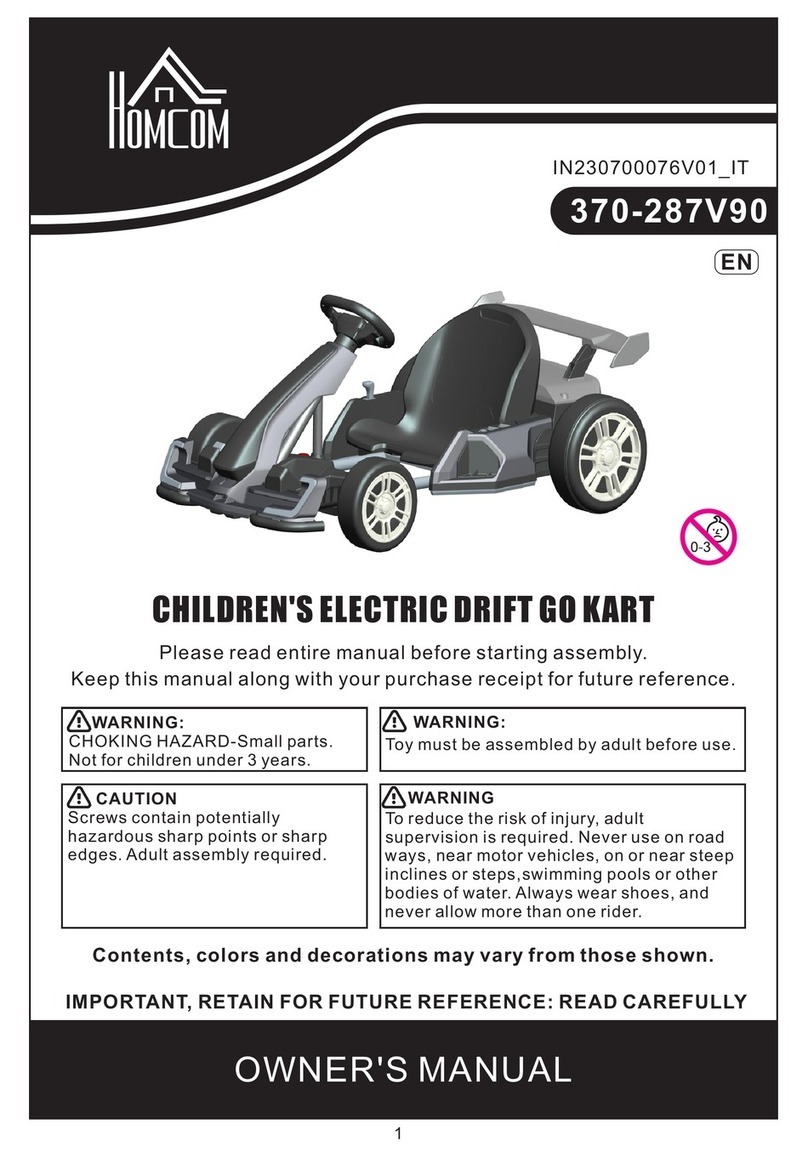
HOMCOM
HOMCOM 370-287V90 manual
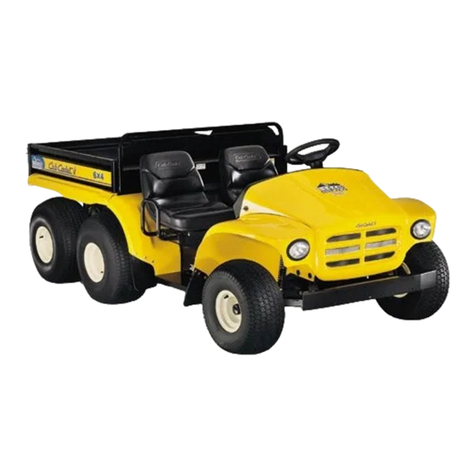
Cub Cadet
Cub Cadet Fire & Rescue 642 Operator's manual
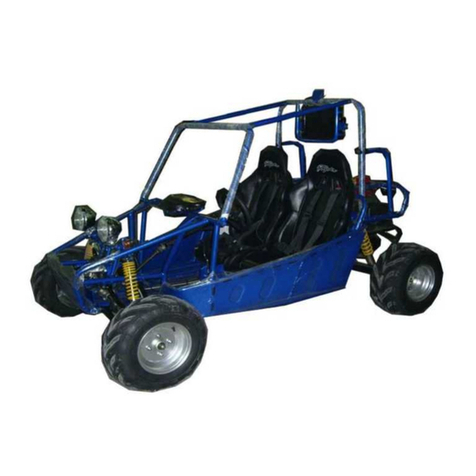
Joyner
Joyner Dirt Devil SZ250DS 2006 Owner's manual and parts manual
